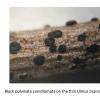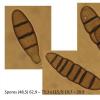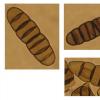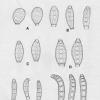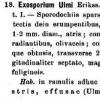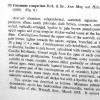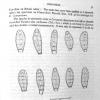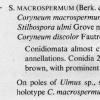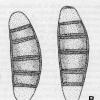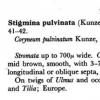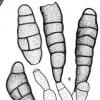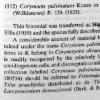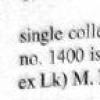
20-12-2025 23:08
Patrice TANCHAUDBonsoir, récolte sur sol sablonneux dans l'arri�

21-12-2025 09:32
Hello.A tiny ascomycete found embedded in wood in

20-12-2025 15:47
Mirek GrycHi.These grew on pine wood that was heavily covere

18-12-2025 21:17
Pol DebaenstThe identification took me to Byssonectria deformi

15-12-2025 07:09
 Danny Newman
Danny Newman
indet. Rutstroemiaceae sp. on unk. fallen leavesMc

19-12-2025 10:10
Patrice TANCHAUDBonjour, récolte réalisée en milieu dunaire, a

18-12-2025 17:23
 Bruno Coué
Bruno Coué
Bonjour,je serais heureux d'avoir votre avis sur c

18-12-2025 18:07
Margot en Geert VullingsThese plumes were found on rotten wood.They strong
 Dear Friends
Dear FriendsDid you know the species of coelomycete, photos of which are presented below?
Personally, I have no idea what it is. Spores are very abundant and formed on the thin dead twigs of Ulmus still attached to the tree.
Grateful before,
Alex

Dear Friends
Thank you for advise very much!
I was thinking about species, about which you wrote me.
I think it's something else. What do you think about Exosporium ulmi Erikss., Mykol. Zentbl. 1: 35 (1912)?
Please look at the description of this species in the attached file. Size of spores corresponds quate good, the septation character - in some extent. Unfortunately, I do not have the opportunity to find the original article, where this species has been described. It is possible, more in detail description and iconotype is present there.
Alex
P.S.
Below I send also the description of Coryneum compactum and Seimatosporium macrospermum which I have.

Regards
Martin

If I understood correctly, in 1975 Sutton noted that Stigmina pulvinata is doubtful species. A single studied sample of this species (France, vicinities of Paris, 1840) collected from Ulmus really was Stigmina compacta (= Coryneum compactum). My sample is true Stigmina pulvinata sensu Ellis (which is now considered to be the species-artifact)!
I'm at a loss, what I need to do with this find, to bring the work to the end. Coryneum is not "my" group of fungi and I had no intention of working with her deeply. And at the same time, losing this data would be unforgivable.
Alex

